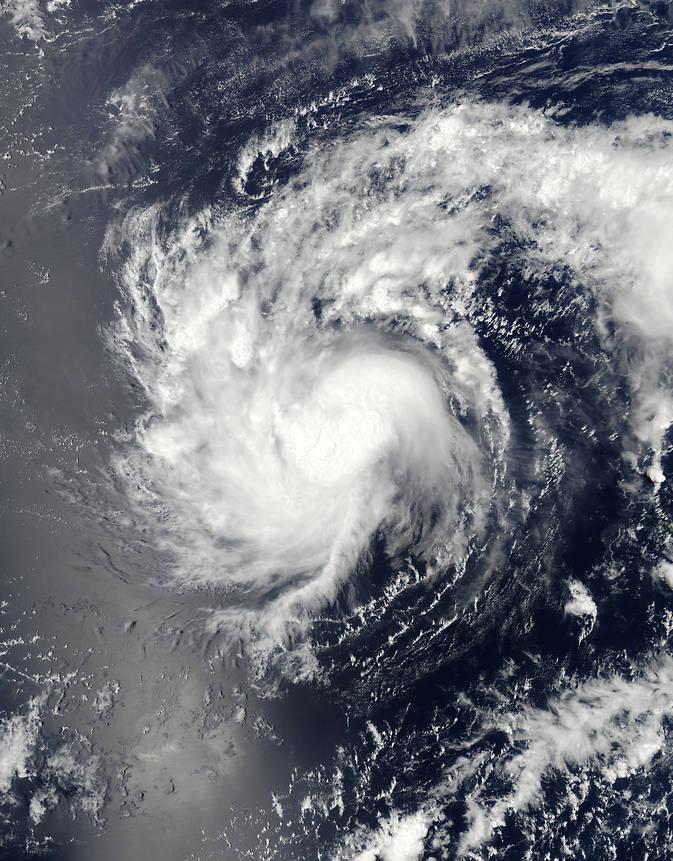Tropical Depression Haishen moves away from Fananu

NASA's Aqua satellite captured this visible-light image of Haishen in the Pacific Ocean on April 4, 2015, when it was a tropical storm. Credit: NASA Goddard's MODIS Rapid Response Team
Before Haishen weakened from tropical storm status, NASA's Aqua satellite passed overhead and captured a visible image showing the system over Micronesia.
On April 4 at 03:00 UTC, the Moderate Resolution Imaging Spectroradiometer or MODIS instrument aboard NASA's Aqua satellite captured a visible image of Tropical Storm Haishen over the Fananu and the Federated States of Micronesia.
The MODIS image showed the center of the storm northwest of Fananu.
By 1500 UTC (11 a.m. EDT) on April 6, Haishen had weakened to a tropical depression with maximum sustained winds near 25 knots (28.7 mph/46.3 kph).
The depression was moving to the north-northwest at 7 knots (8 mph/12.9 kph), further away from Micronesia.
It was centered near 9.6 north latitude and 150.3 east longitude, about 149 nautical miles (171 miles/276 km) northwest of Chuuk.
Infrared imagery showed that there was little strong convection left in the system and most of it was being pushed away from the center by strong southwesterly wind shear.
That wind shear continues to weaken the tropical depression and the Joint Typhoon Warning Center expects Haishen to dissipate in a day or two.
Media Contact
All latest news from the category: Earth Sciences
Earth Sciences (also referred to as Geosciences), which deals with basic issues surrounding our planet, plays a vital role in the area of energy and raw materials supply.
Earth Sciences comprises subjects such as geology, geography, geological informatics, paleontology, mineralogy, petrography, crystallography, geophysics, geodesy, glaciology, cartography, photogrammetry, meteorology and seismology, early-warning systems, earthquake research and polar research.
Newest articles

Superradiant atoms could push the boundaries of how precisely time can be measured
Superradiant atoms can help us measure time more precisely than ever. In a new study, researchers from the University of Copenhagen present a new method for measuring the time interval,…

Ion thermoelectric conversion devices for near room temperature
The electrode sheet of the thermoelectric device consists of ionic hydrogel, which is sandwiched between the electrodes to form, and the Prussian blue on the electrode undergoes a redox reaction…

Zap Energy achieves 37-million-degree temperatures in a compact device
New publication reports record electron temperatures for a small-scale, sheared-flow-stabilized Z-pinch fusion device. In the nine decades since humans first produced fusion reactions, only a few fusion technologies have demonstrated…





















